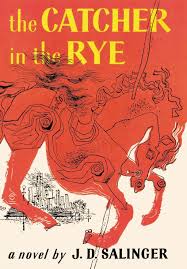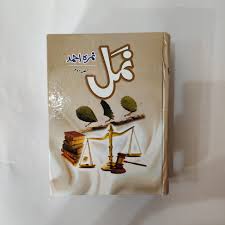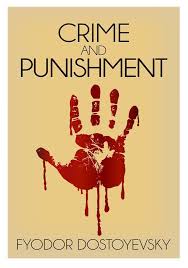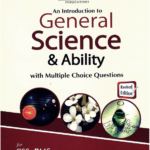Description
A Thousand Splendid Suns” is a highly popular novel by the bestseller author Khaled Hosseini, who was also the writer of “The Kite Runner.” Published in 2007, it is an extremely strong, emotional story of life which unfolds against the backgrounds of Afghanistan over several decades of its very turbulent history. The book revolves around issues of love, friendship, sacrifice, and oppression of women through the lives of two Afghan women: Mariam and Laila.
Summary:
1. Plot Summary:
The novel is divided into four parts and primarily concerns two central characters, Mariam and Laila, whose lives intersect in unexpected and profound ways.
Mariam’s Story: Mariam is born to a wealthy businessman and his servant and grows up in neglect and jealousy because her father loves one of his servants more. She ends up being married at the age of 15 years to Rasheed, an abusive much older man, where her life marks a story of endurance as she endures the weight of Rasheed’s brutality and societal shame.
The Story of Laila: Laila, on the other hand, comes from a relatively modern and affectionate family. However, her life will unfortunately take a turn for the worse when her family is killed in the civil war. She has to marry Rasheed as well and thus becomes Mariam’s co-wife also. While the two women initially detest each other, they gradually begin to empathize with each other and the urge to survive Rasheed’s brutality.
As Afghanistan descends into war and political turmoil-from Soviet occupation to the rise of the Taliban-the personal struggles of Mariam and Laila resonate with the greater chaos going on around them. Their friendship becomes a source of strength in their struggle to protect Laila’s children and find a way out from Rasheed’s oppression.
2. Themes:
Women’s Struggles and Resilience It is based on oppression against women in Afghan society as well as the fact how they gain resilience from the adversary. Both Mariam and Laila go through physical, emotional, and social mistreatment but they do represent much-needed strength, especially when they both unite together as a testament to female solidarity.
Love and Sacrifice: The main message throughout the book is love in all its various forms. Laila’s infatuation with her childhood friend Tariq, Mariam’s desire to attain her father’s love and acceptance, and the zealous relationship between these two women explain how love brings brightness to a darkened life. Showing sacrifices by Mariam and Laila toward each other and toward Laila’s children depict transformational beauty of love.
The novel was set against the background of Afghanistan’s long and painful history of conflict-from the Soviet invasion to the rise of the Taliban. Violence and instability have changed everything, as the effect of war reaches each and every side of characters’ lives, thus showing how war does not demolish only the physical landscape but also tears at the emotional and social fabrics of a nation.
Hope and Redemption: Whereas the novel is so full of tragedy, that side of the coin situates hope. The characters’ ability to find happiness, love, and peacefulness in the midst of their chaos and, ultimately, that of the redemption and freedom Laila finds, clearly conveys a message that, even in the most miserable of times, there is hope for a brighter day.
3. Character Development:
Mariam: It is of such a life of shame and shame, that Mariam lives at the hands of her family, as if she were a burden they could not bear. Her marriage to Rasheed does not much alter her situation, but gradually Mariam grows into a source of strength who gradually takes on more agency. Her final sacrifice for Laila and her family constitutes a kind of apotheosis of her emotional and moral transcendence.
Laila: This spirited and intelligent girl with dreams of a better future is shattered by war and loss, but she remains a fighter. Her growth in the story lies in her resilience and strength of maintaining hope even when facing the very harsh realities of her marriage to Rasheed. Her love for Tariq and for her children can become her strength.
Rasheed: Rasheed is the quintessential misogynist and controlling male character. Rasheed’s characterization depicts the underpinning of patriarchal repression and violence that women face in most parts of Afghan society. Rasheed exercises violence as a means of controlling both Mariam and Laila, representing a broader set of societal structures that silence women’s rights.
4. Historical and Cultural Context:
The novel is, as has been mentioned, a vivid account of life in Afghanistan during great times of turmoil. The novel thoroughly documents the various political regimes that ruled Afghanistan, such as
Soviet Invasion: The Soviet occupation and its devastating effect on the Afghan people have been put into words through the war that distorts the lives of Laila’s family and her childhood years.
Civil War (1992–1996): Soon after the USSR leave, civil war breaks out in Afghanistan. This round too ravages families and society
Taliban Regime (1996–2001): Talibans are even more barbarous to women and snatch the most fundamental rights from them. Mariam and Laila face their worst times during Taliban rule as its unforgiving laws reduce their lives to a small space
5. Symbolism:
The Title “A Thousand Splendid Suns”: It is derived from a line in a poem from 17th-century Persian poet Saib-e-Tabrizi, who wrote about the beauty of Kabul. It hints at eternal beauty and the strength of the Afghan people in general, and women in particular, against all the adversities.
Burqa: The burqa, Mariam and Laila are forced to wear it under the dominance of Rasheed, represents women’s subjugation in Afghan society. It symbolizes the silencing and the insignificance of women living under such an oppressive regime.
Conclusion :
It is indeed a very moving novel that throws open the tough realities to which Afghan women are subjected but at the same time extols the strength and resilience of Afghan women. Khaled Hosseini, in his masterful storytelling, richly paints the history of Afghanistan with not only vivid imagery but with the characters being brought alive in sorrowful or hopeful ideals.
The power of love, friendship, and sacrifice represents the main point of the novel, showing that human beings are given stamina in the dark moment to survive and fight back while looking toward a better tomorrow. Through universal themes of endurance and hope, it is said to influence the lives of readers all over the world with its great powerful work of modern literature.










Reviews
There are no reviews yet.